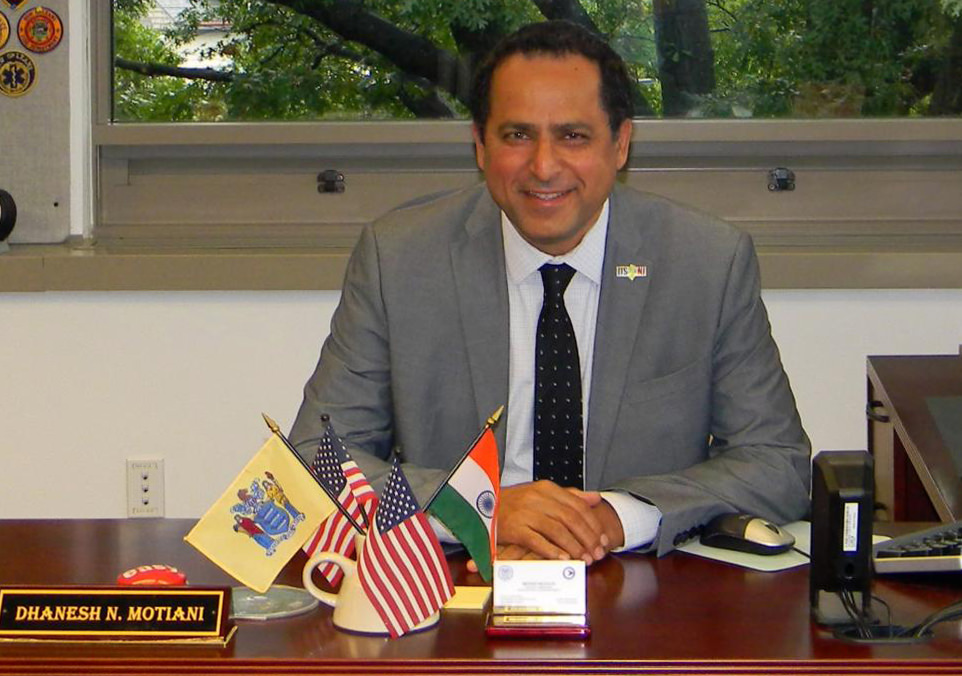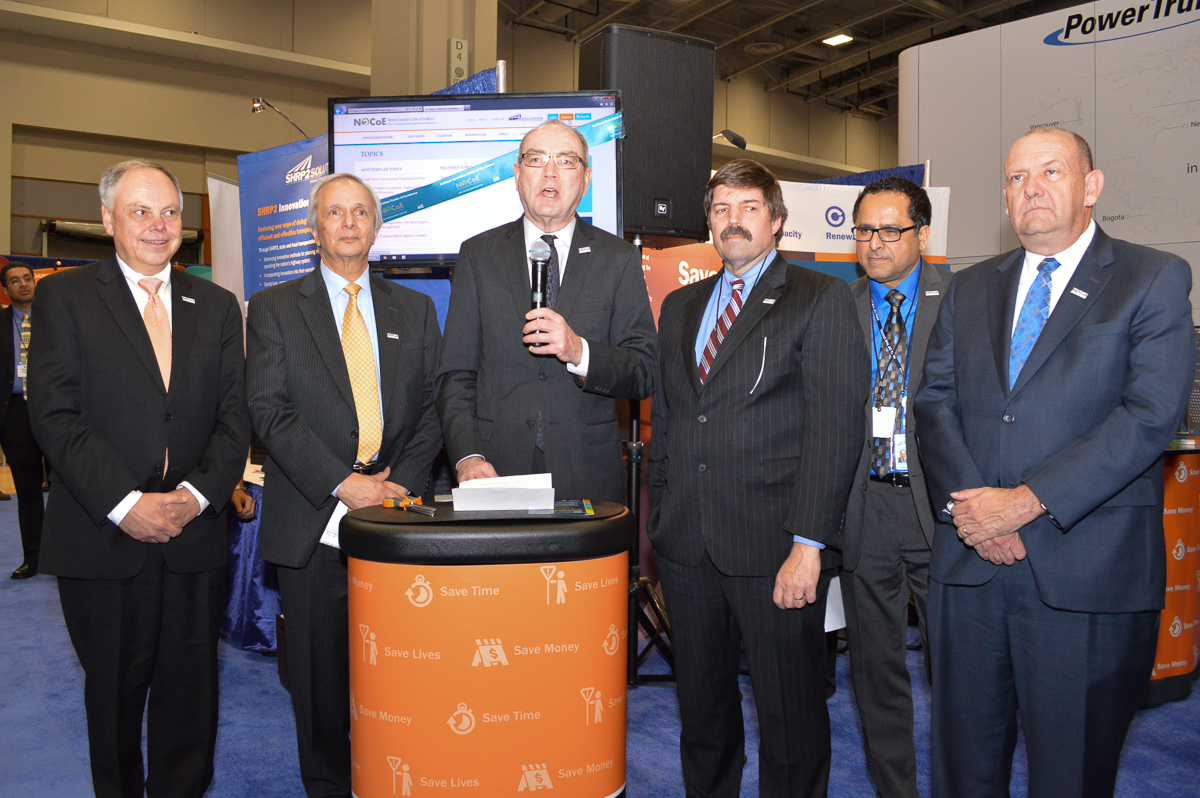National Operations Center of Excellence Newsletter - Jan. 2015
The New National Operations Center of Excellence - Helping Transportation Agencies Fulfill Their Safety and Mobility Missions
By Dennis Motiani, Executive Director, NOCoE
Download PDF (729kb)
The role of a transportation agency has evolved in recent years from the traditional construction and maintenance focus of the interstate highway construction era towards a real need to actively manage and operate our transportation network as effectively as possible. Well-designed and managed systems operations improve travel-time reliability, bringing smarter and safer approaches to reducing nonrecurring congestion while significantly improving mobility.
As state and local transportation agencies look to improve the functionality of their highway networks, the field of systems operations has become a more critical function, and the latest information, techniques, and practical guidance must be readily available to practitioners and policymakers alike.
That’s why I am honored and proud to be leading a new effort spearheaded by the Federal Highway Administration (FHWA) and three partner associations: the American Association of State Highway and Transportation Officials (AASHTO), Institute of Transportation Engineers (ITE), and the Intelligent Transportation Society of America (ITS America).
Building on the work completed through the second Strategic Highway Research Program (SHRP2), the new National Operations Center of Excellence (NOCoE) has been designed to provide the tools, information, and hands-on technical assistance needed to support the transportation systems management and operations (TSM&O) community. Kudos to all involved and congratulations to all TSM&O practitioners.
In the coming months, NOCoE will be offering peer exchanges, webinars, on-call assistance, assessments, and other activities through our Operations Technical Services Program. Already we have a new web portal – www.transportationops.org – that is growing in content and information on a daily basis.
We plan to tackle a range of TSM&O-related topics through blogs with technical experts, discussion forums, training programs, case studies, and best practices. We want the Center to be a place where you can share information as well as receive it – we want you to post your latest work plan or request for a proposal; a specific challenge you are facing with a new technology; or techniques you’ve used to empower your staff.
This is YOUR transportation operations resource and we want your feedback to continually improve our services and the website. Please feel free to contact me with your suggestions, either through the website or at d.motiani@transportationops.org. I look forward to working with you in the months and years ahead!
Dennis

AASHTO’s Wright: States Need More Federal Help Maintaining, Improving Transportation
 Bud Wright, executive director of the American Association of State Highway and Transportation Officials, says Congress can "build muscle for the American economy" by bolstering the Highway Trust Fund so states can whittle down the infrastructure backlog.
Bud Wright, executive director of the American Association of State Highway and Transportation Officials, says Congress can "build muscle for the American economy" by bolstering the Highway Trust Fund so states can whittle down the infrastructure backlog.
Wright, in an opinion article carried by the trucking industry weekly newspaper Transport Topics, said that is a big lesson of the recent "Bottom Line Report" on infrastructure needs by AASHTO and the American Public Transportation Association.
He said the report "makes a strong case that just shoring up the Highway Trust Fund to maintain current levels will not make much of a dent in congestion that saps economic vitality. It shows that a flat-level federal program will not keep pace with increased vehicle miles traveled on highways or with demands for public transportation services, much less close the investment gap that already exists." To read more, please click on the link above.
TRB Coverage on TTV: State CEOs’ Concerns on Trust Fund, Sec. Foxx and More
AASHTO's Transportation TV will be featuring some highlights from exclusive video it obtained at the Transportation Research Board's Jan. 11-15 annual meeting in Washington, D.C. That event, which attracted more than 12,000 attendees, included often-packed sessions to hear state transportation department CEO panels probe important issues facing the industry.
TTV will report on a candid roundtable discussion with four state CEOs who are concerned about locking in federal funding for the launch of spring and summer construction projects.
Coverage also includes a speech at TRB by U.S. Transportation Secretary Anthony Foxx, and a ribbon-cutting there for a new National Operations Center of Excellence and introduction of its executive director, Dennis Motiani.

Question and Answer Session with Don Hunt, Outgoing CDOT Director
Link to Q&A from Denver Post
A Denver Post reporter recently sat down with Don Hunt, outgoing executive director of CDOT, to ask him to reflect on what has been done in key corridors to improve the state's highways, what still needs doing, how it can be paid for, and what technology has in store for motorists.
Q: Colorado faces major transportation challenges. What are the most difficult ones?
Hunt: What I increasingly hear all around the state is the importance of the I-70 corridor, from at least the ski resorts in the west to Denver International Airport in the east. Certainly things are being done along that corridor but we're really playing around the edges, too.
In the mountains, we're trying to get more out of the system with stepped up operations and maintenance to decrease those delays on Saturday and Sundays, and we're adding the peak-period shoulder lane, which is somewhere between genius and craziness. We're adding 2 feet of pavement essentially in order to open up that interior shoulder to traffic on Saturday and Sunday afternoons, and charge a toll for it. There are only a few places in the country that are doing that — Massachusetts, for one — but no one is doing it in the climate we have above 8,000 feet. We'll have that lane open late next fall. We only have enough money to do eastbound.
To read more, please click on the link above.
‘Smart City’ Traffic Systems Will Reduce Congestion for Approximately 700 Million Drivers By 2019
Link to article from Traffic Technology Today
A new report forecasts that ‘Smart City’ traffic management and parking projects will reduce cumulative global emissions in the order of 164 MMT (million metric tons) of CO2 between 2014 and 2019; equivalent to the annual emissions produced by 35 million vehicles. Not only will this benefit the environment, but it will also significantly impact the quality of city dwellers’ lives, with some 700 million automobiles projected to be on city roads by 2019. The report from Juniper Research, ‘Smart Cities: Strategies, Energy, Emissions & Cost Savings 2014-2019’, found that high levels of city traffic congestion, combined with advancements in ‘Internet of Things’ sensors and software systems, has driven plans to reduce high traffic levels through smart initiatives. To read more, please click on the link above.
SHRP 2 2014: Our Year in Review
TRB's second Strategic Highway Research Program (SHRP 2) has released a summary of the program's major 2014 accomplishments in its four focus areas of capacity, renewal, safety, and reliability.
Release of Enhanced SHRP 2 Naturalistic Driving Study Safety Data Website
The SHRP 2 Naturalistic Driving Study Project Team has released an enhanced version of the SHRP 2 Safety Data website (called “InSight”). This data dissemination website features trip density maps that show the number of trips and participants that traversed roadways near the data collection sites, a new overview video that provides a quick walkthrough of website capability, and a new visual and cognitive tests dataset. In addition, significant amounts of data were added to the system, for new total of 4.3 million trip summaries, over 3,000 crash/near crash events, and over 15,000 baseline events. Use of these data is available after logging onto the website. Please click here for more information.